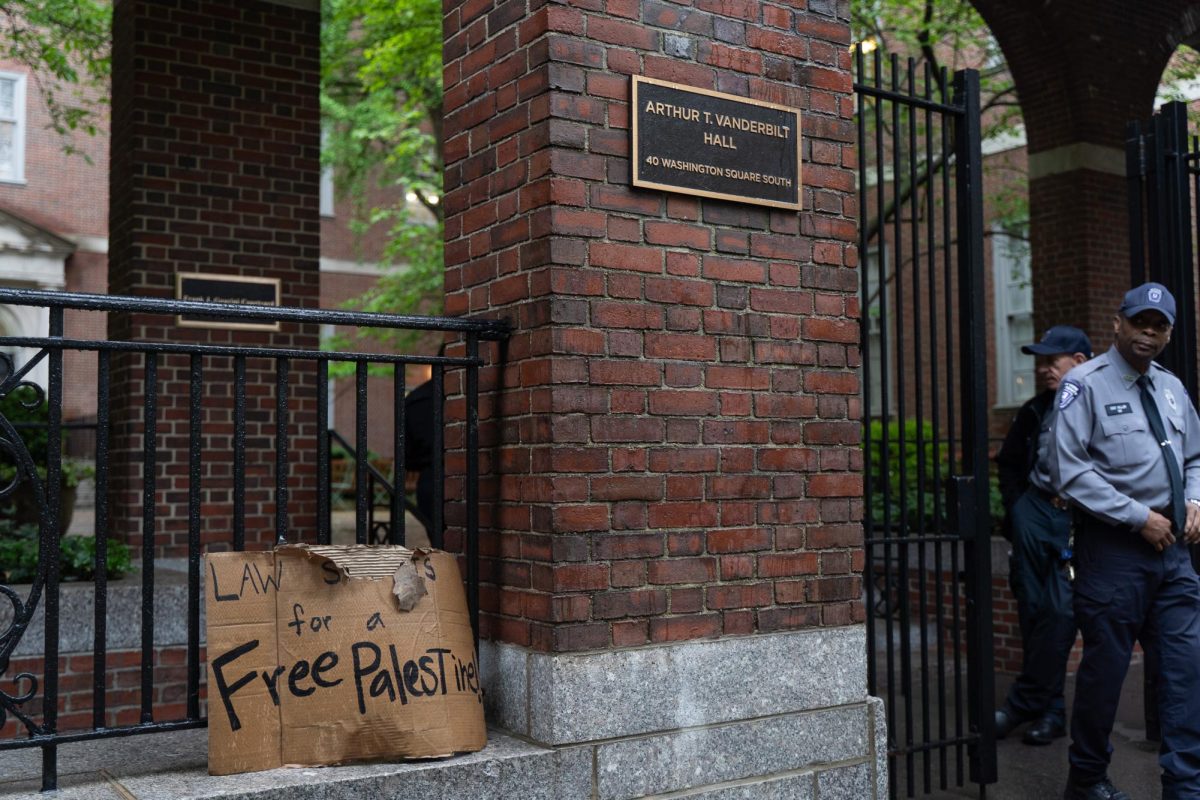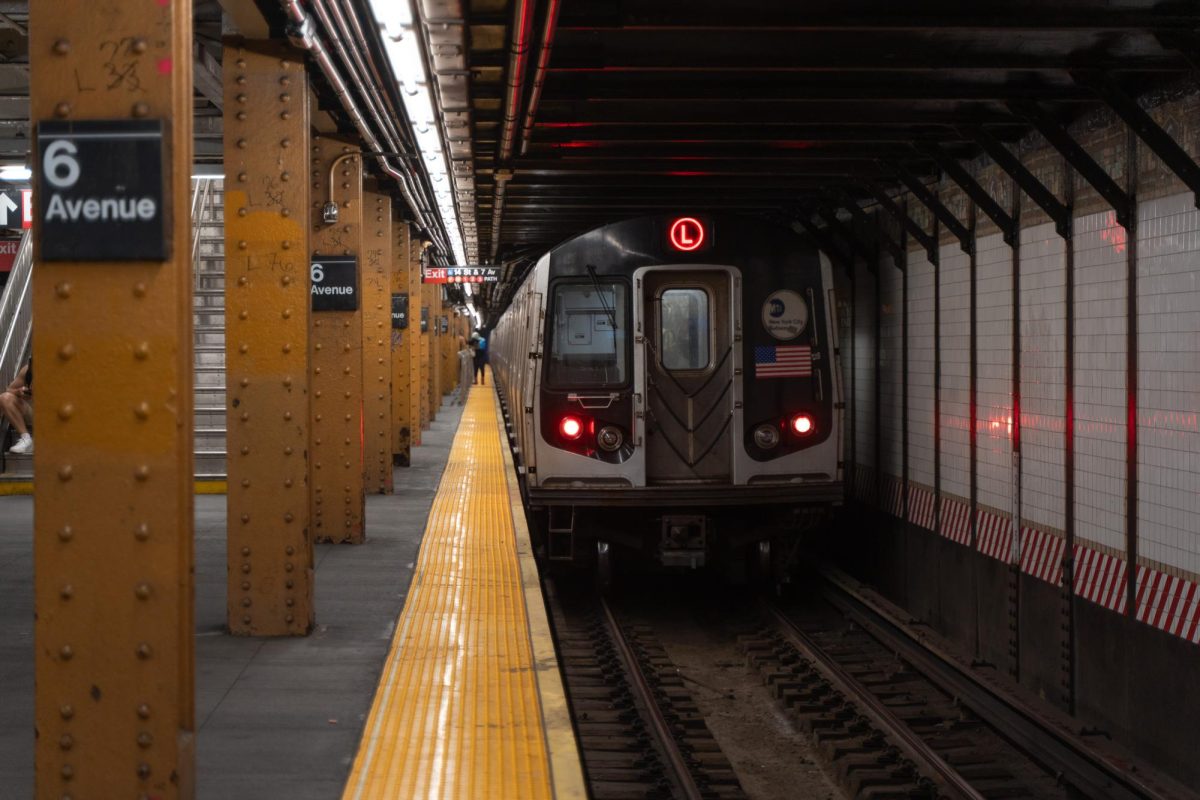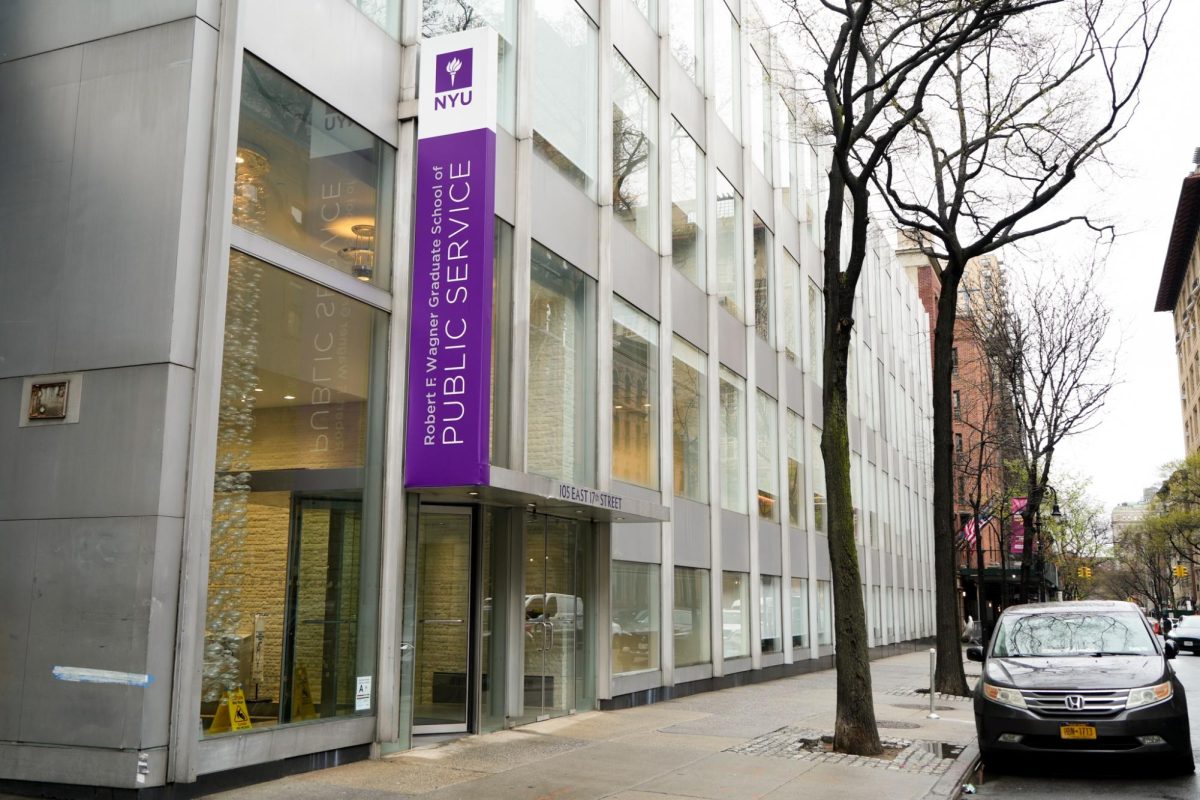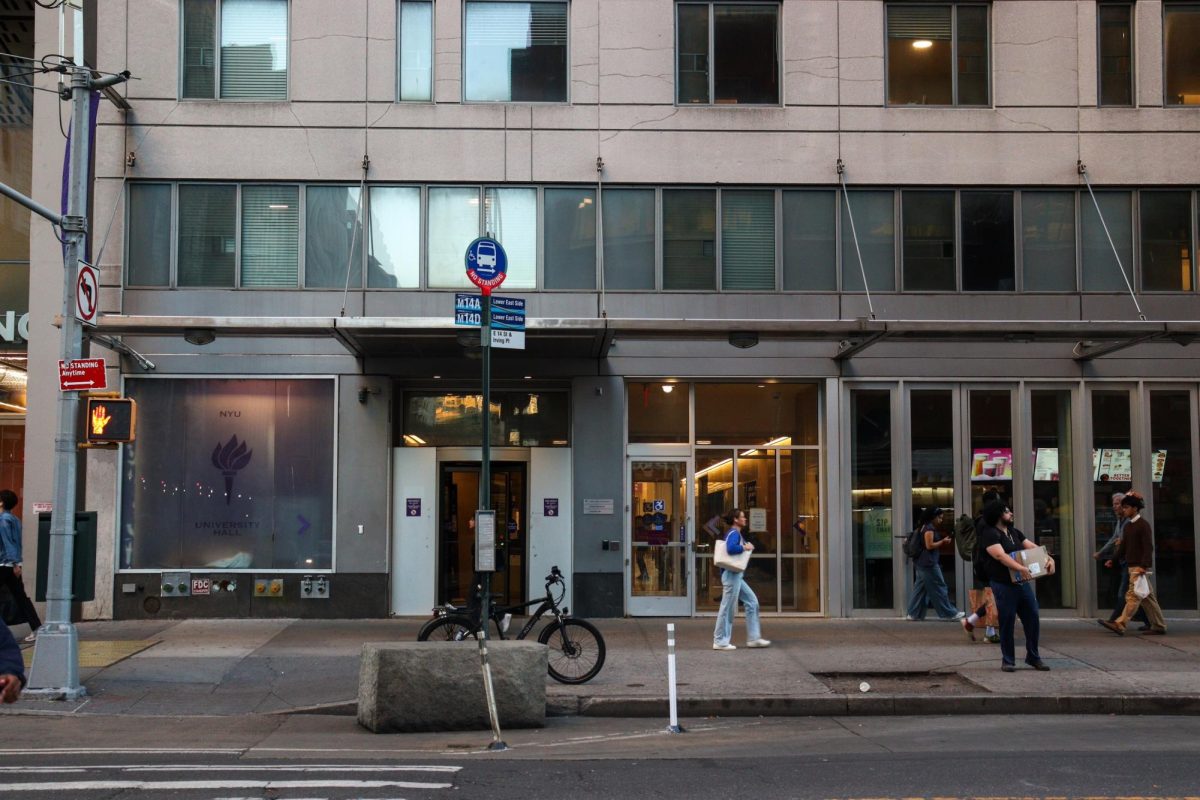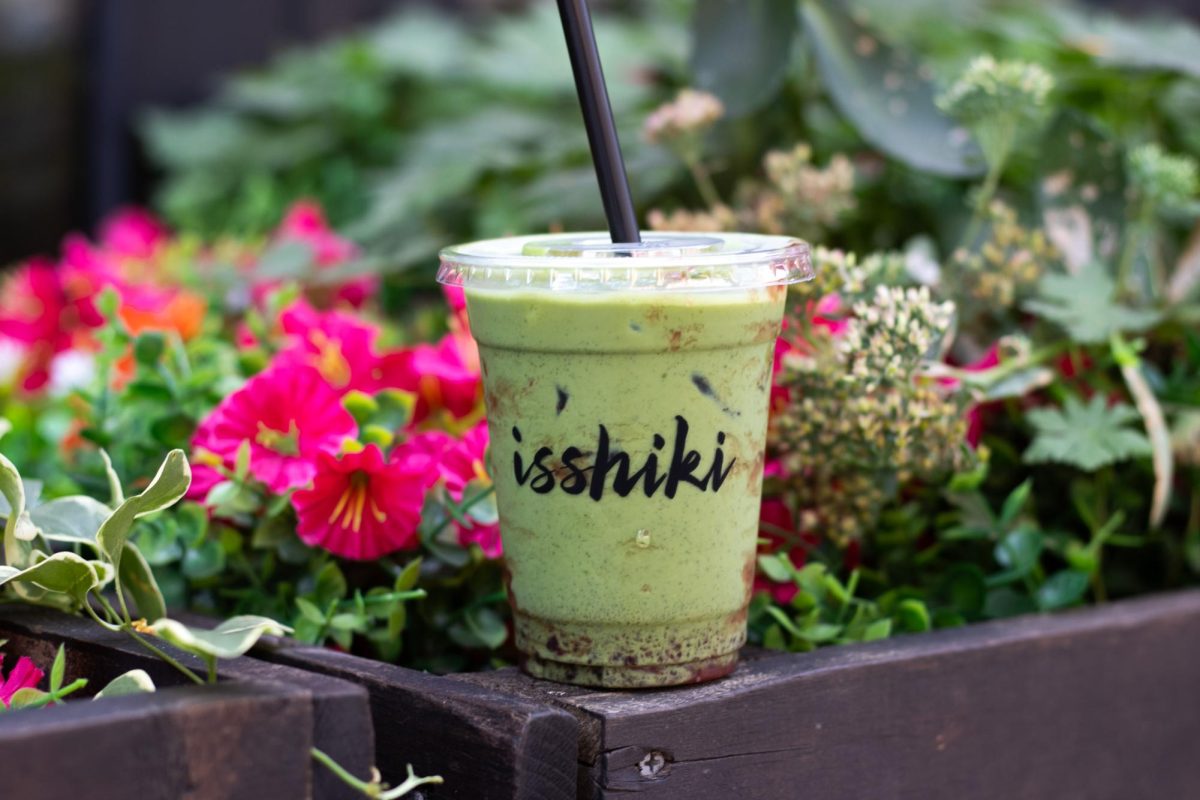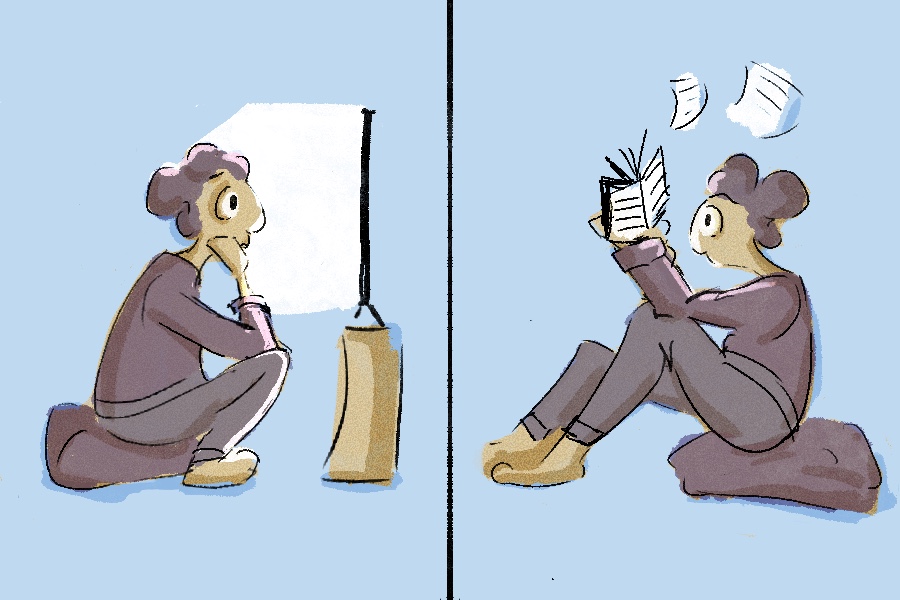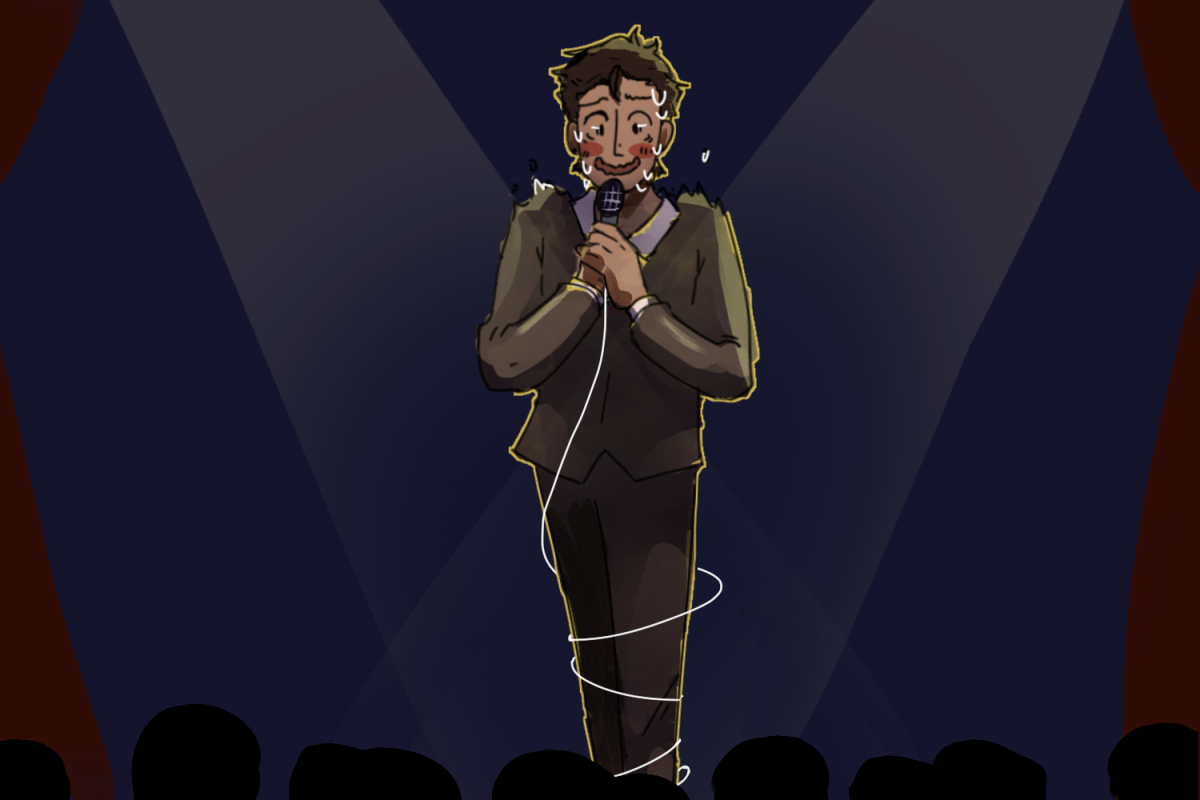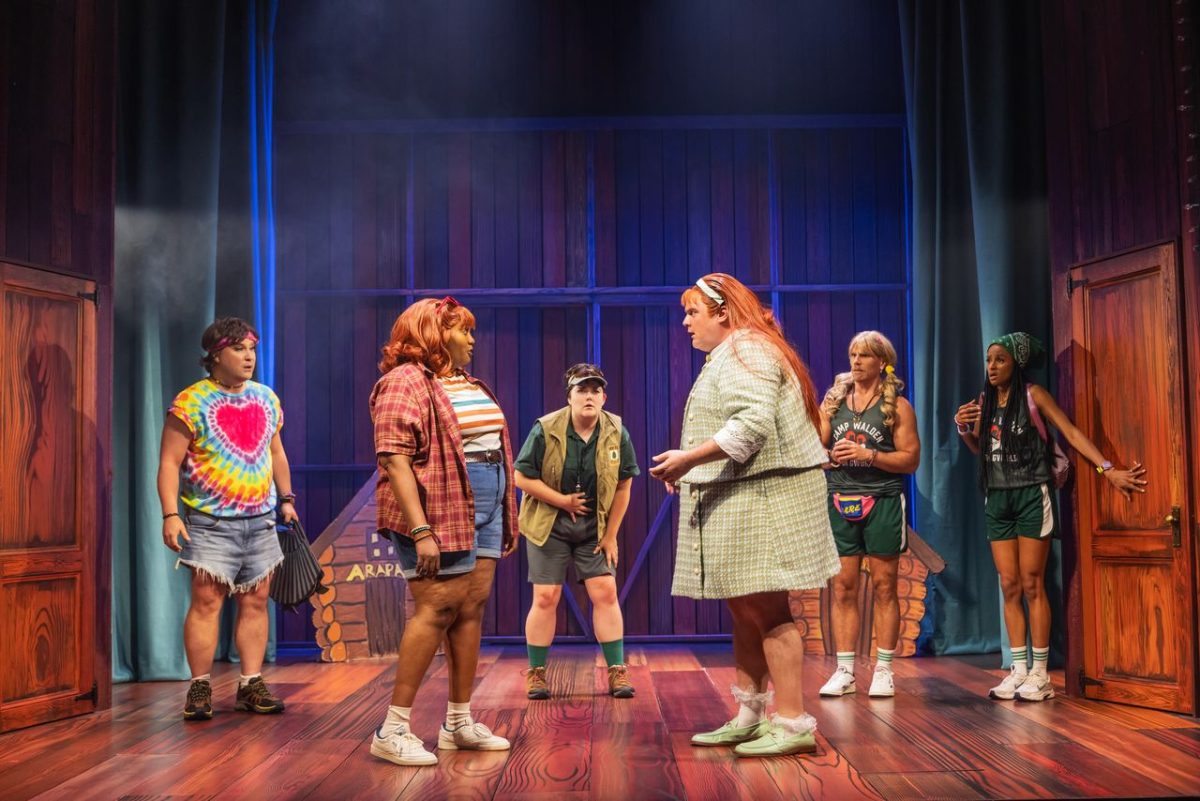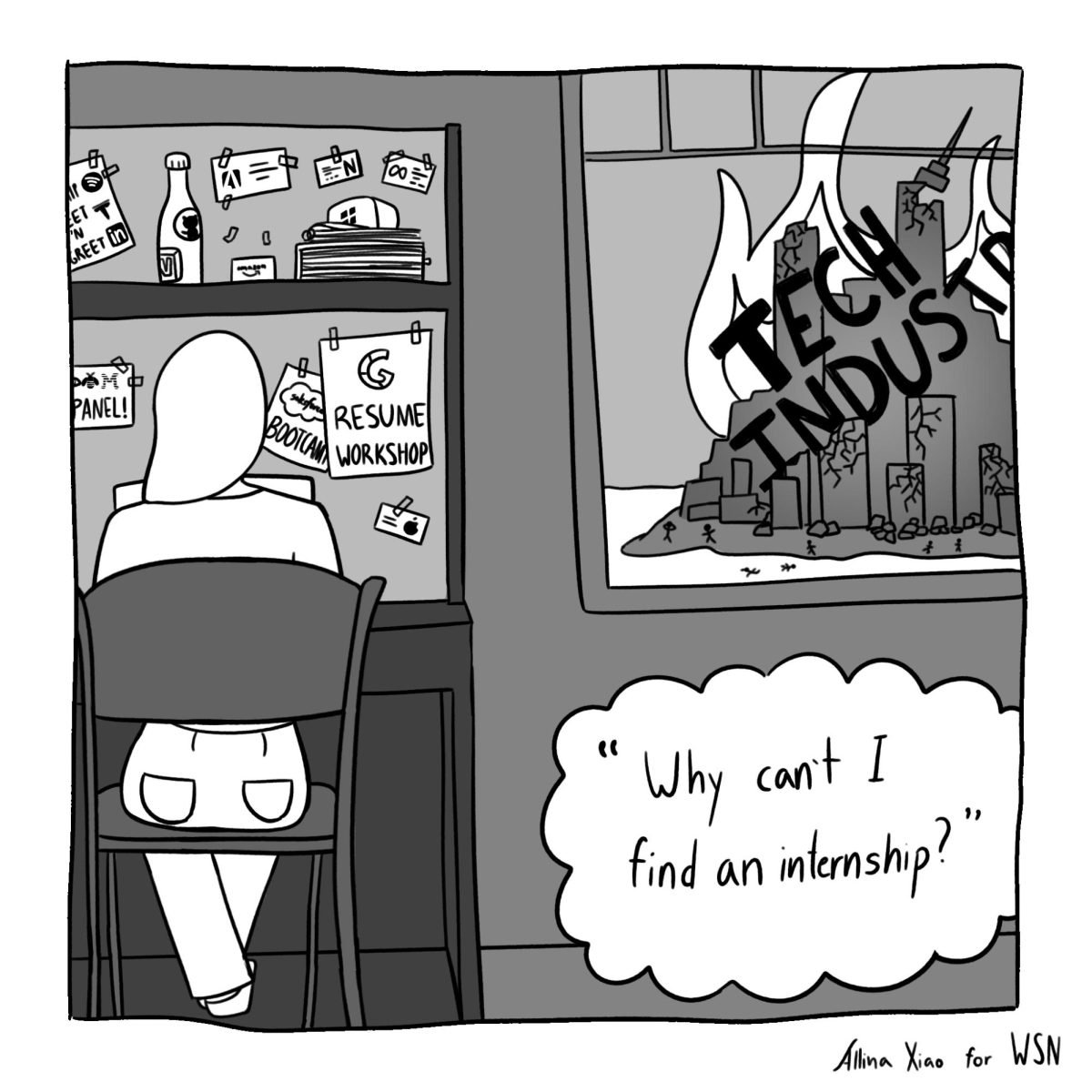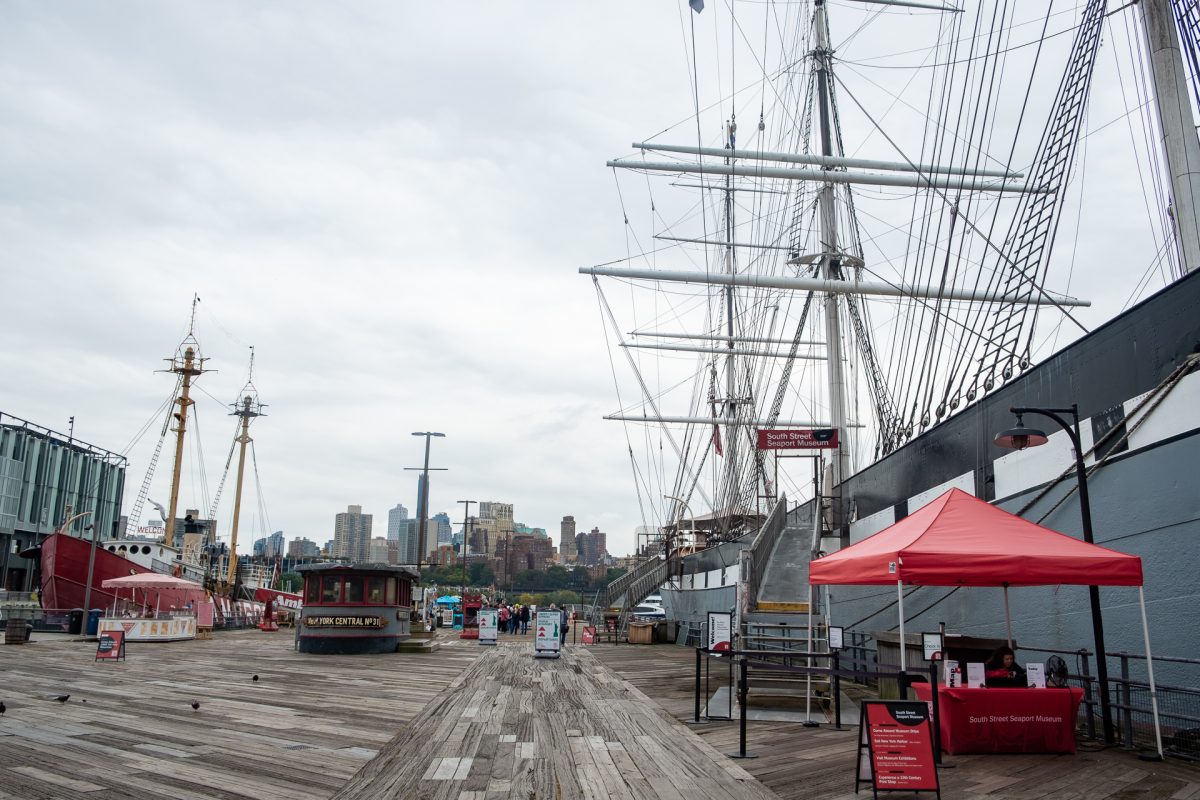Against the salt spray of the East River, surrounded by ships and views of the Brooklyn skyline, are three art pieces: a sprawling violent wave, interlacing recycled-plastic tapestries and illustrated banners overlaid with poetry representing local biodiversity. On Pier 16 in downtown Manhattan, the city’s last wooden pier, observers are encouraged to consider their role in history while viewing the artwork, themed around coastal resiliency during a time of extreme weather.
The three art pieces are by local artists Michael Krondl, Sari Nordman, Singha Hon and Denise Zhou. The exhibition “Art at the Edge” was curated with the Waterfront Alliance, a nonprofit protecting waterfront spaces, and the Seaport Entertainment Group, a company dedicated to hospitality in the titular Manhattan historic district.
Nordman’s “Anxiety Tower” lives up to its name. The freestanding sculpture of tapestries extending from a metal frame stands tall, bristling and injected with color. The artwork’s spiked texture and short weaving of single-use plastic represents the psychological intensity of the climate crisis, though the construction process welcomes the opposite. Nordman’s process relied on weaving practices that are, in nature, “meditative.”
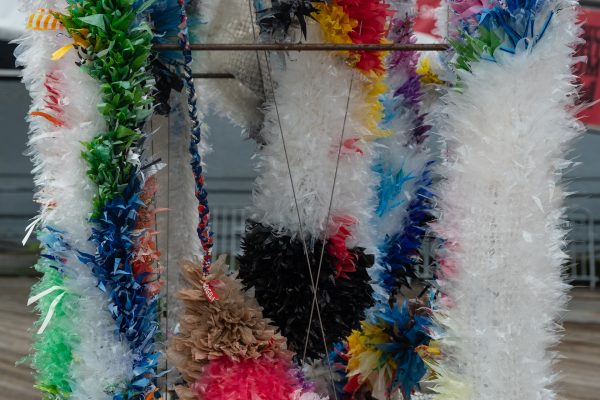
Further down the gangway, captivating mesh banners are stretched against the pier’s railing, set against the backdrop where the sky meets the water and cityscape. Hon and Zhou’s “Shadows at the Water’s Edge” features vibrant representations of Seaport’s native and migrating species including the diamondback terrapin, which has faced extinction from overhunting.
“We wanted to create something that would feel like both a story and a window in this way that’s moving through time,” Hon told WSN.
Accompanying the illustrated banners are words, including, “WHAT COULD WE HEAR WITHOUT THE COLD / SHRIEK OF COLONIAL MACHINES? / A SYMPHONY / THE THUNDEROUS FLAP OF WINGS SPREAD WIDE AS THE ISLAND.” The powerful writing and radiant illustrations of sea life in water beget both awe and awareness.
At the end of the deck, a 110-ft long illusory chasm splits wooden panels of the gangway to reveal surging currents. Krondl’s “Tide,” a digital photograph printed on vinyl and stretched along the floor, is realistic enough to provoke automatic shock and a double-take. The piece encapsulates the danger of climate change-induced weather events, both in scale and through the unconstrained ferocity of the waves, making it appear as if the pier is sinking. Since the public installation physically interrupts the path, visitors are instantly transported to a reality where the dangers of rising waters cannot be ignored.
“People respond to it in different ways,” Krondl told WSN. “So a little kid will run across it thinking, ‘Oh, this is cool. I’m running across water.’ Another person might feel a little bit of trepidation by walking across a print of water. Some people just are oblivious.”
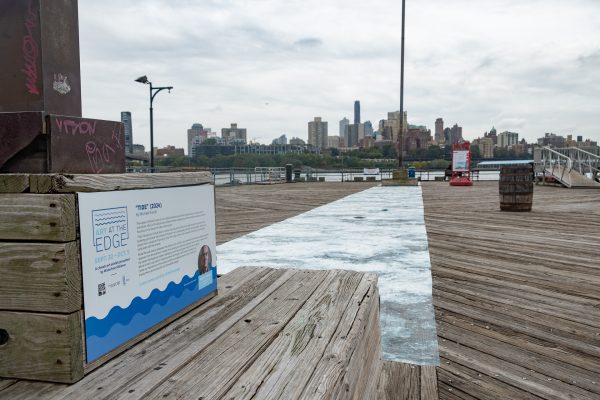
While each piece is unique in its technique and meaning, they unite under a central theme of coastal resilience. The Waterfront Alliance, one of the partners in the exhibition’s curation, advocates for awareness and policy that safeguards New York City and New Jersey from climate disasters like flooding, expands transportation on waterways and increases access to recreational water activities.
“It’s important that communities are not only aware of the challenges that come with living near water and living in a time of extreme climate, weather events, but it’s also knowing their options,” said Aria Cochran, Director of Communications at the Waterfront Alliance. “If I wanted to get on the water in the summer, where do I go?…That’s a community feature, that is something that provides benefits to our local economies.”
With such a wide audience, the installations can’t perfectly educate the entirety of observers. However, they fulfill art’s primary responsibility by prompting emotion, conversation and action. The descriptions of the artwork point viewers to information about the Waterfront Alliance, but even if passersby simply observe or reflect, they will likely take with them a reminder of the waterway’s significance.
The installation is on view as part of Climate Week NYC, hosted by the international non-profit Climate Group in partnership with the United Nations General Assembly.
The exhibition is freely accessible to the public until Oct. 6 at the South Street Seaport Museum’s Pier 16.
Contact Sydney Chan at [email protected].





